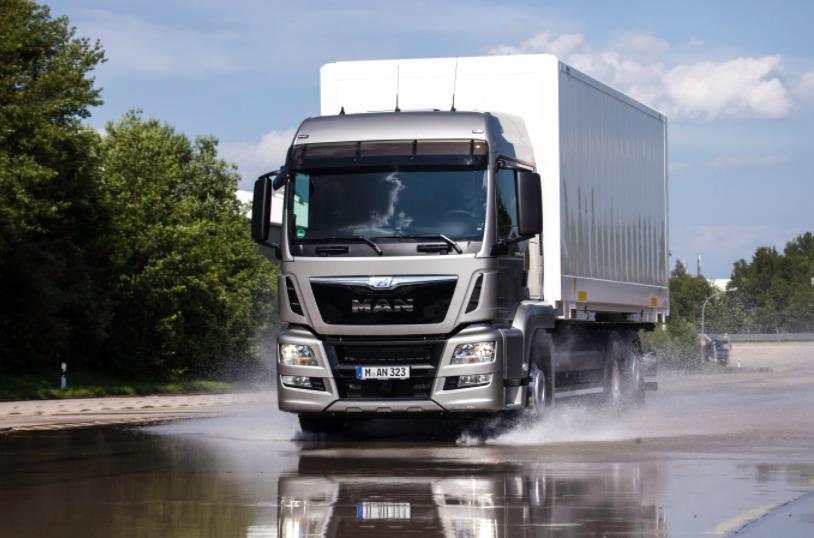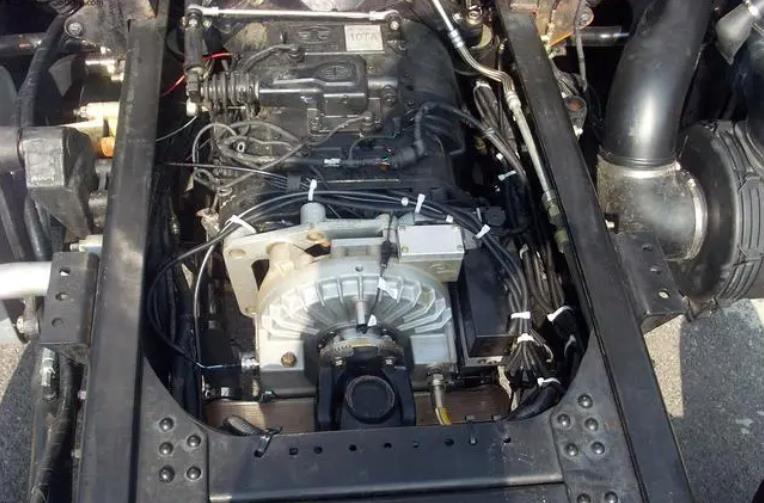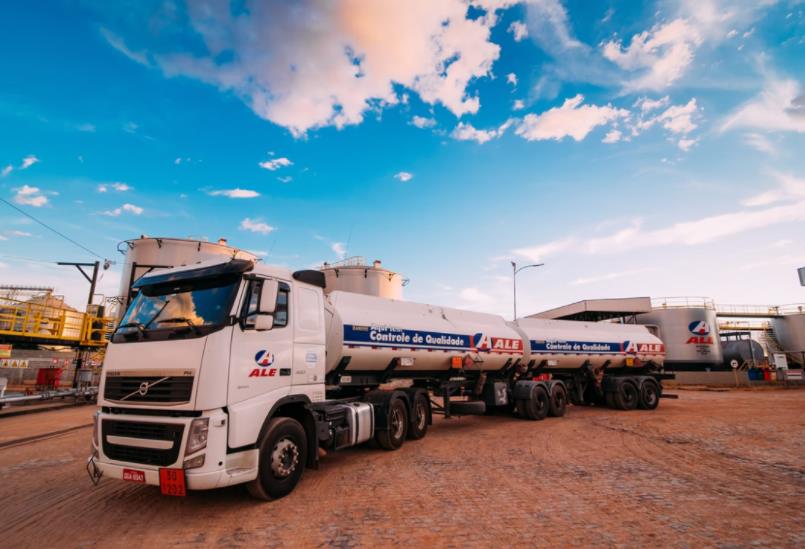NEWS CENTER
NEWS CENTER

With the continuous improvement of vehicle technology, hydraulic retarders are becoming increasingly popular in commercial vehicles. As an auxiliary braking device, the hydraulic brake can guide the high-temperature working oil to the cooler for cooling, and then replenish the cooled oil through the oil pump. This cycle can achieve constant speed or deceleration of the vehicle.

Although referred to as the "divine weapon" for vehicle safety, hydraulic retarders are also prone to various malfunctions during actual use, and many car owners are not familiar with them, so they do not know how to handle them. For this reason, Darong Axle has provided a brief summary of common problems and solutions for hydraulic reducers. I believe that after reading this article, if you encounter any problems with hydraulic reducers again, you can easily deal with them.
Common Fault 1: Excessive Oil and Water Temperature
Solution:
Reduce the transmission gear and maintain the engine speed above 1500r/min to accelerate the water flow rate and fan speed, accelerating heat dissipation.
Be careful not to keep the engine in a high speed state for a long time, as this will affect fuel consumption and engine service life. If the heat dissipation is insufficient for a long time, it is best to go to the main engine factory or liquid buffer supplier to match the two again.
Common Fault 2: The oil/water temperature is too high after using the liquid buffer for a period of time
Solution:
Observe whether the antifreeze has decreased, and if so, add it to the specified scale;
Observe if the thermostat is damaged, causing the large cycle to fail to start and affecting heat dissipation;
Observe if the belt is loose and slipping, causing a decrease in the speed of the fan and water pump;
Check if the radiator has accumulated too much dirt and remember to clean it regularly;
Check if the coolant has deteriorated or contains dust and impurities, which may block the heat exchanger and radiator;
Does the car owner directly replace the coolant with water? If so, please replace the coolant in a timely manner.
Common Fault 3: After the initial installation or maintenance of the hydraulic buffer, it quickly stops working after opening the hydraulic buffer
Solution:
Check if the liquid buffer oil temperature sensor and water temperature sensor are connected incorrectly;
Check if the electronic interface of the proportional valve and the pressure sensor interface are inserted incorrectly, as incorrect insertion can easily cause the pressure sensor to burn out.
When maintaining the hydraulic retarder, it is necessary to mark it properly to avoid making low-level errors.
Common fault 4: Abnormal noise from the liquid buffer
Solution:
Immediately stop using and check if the bolts between the hydraulic buffer and the gearbox are loose, and if the output helical gear is damaged.
Common fault 5: Oil leakage at the input end of the hydraulic buffer
Solution:
This situation is usually caused by damage to the transmission output shaft oil seal, oil leakage in the hydraulic buffer housing, or damage to the hydraulic buffer oil seal. You can keep the vehicle in the parking state, start the hydraulic buffer, check where the problem is, and replace it in a timely manner.

Common fault 6: Oil leakage at the output end of the hydraulic buffer
Solution:
Clean up the traces of oil leakage, keep the vehicle in park, and start the fluid buffer multiple times to check the oil leakage phenomenon:
If the oil leaks out from the inner ring of the labyrinth, check the oil seal or sealing cap for damage, and replace it if there is any; If it does not exist, further disassembly of the assembly is necessary to inspect and replace the small assembly of the sealing cap.
If the oil leaks from the bolt fastening the stator, it is necessary to apply locking adhesive to the thread and tighten the fastening bolt. If there is any damage to the bolt, it needs to be replaced.
Common Fault 7: Liquid Slow Stop Working
Solution:
Power supply reason: Check if the power cord is loose and if the power fuse is damaged; Measure whether the voltage of 16-pin plugs 1, 4, or 56-1, 56-29 is 24V.
Proportional valve failure or no electrical signal in the connector: check if the plug is loose; Measure whether the resistance between controller sockets 15 and 16 is within the specified range; Measure whether the plug voltage is 24V when the retarder handle is pulled to 5th gear.
Handle fault: Use a multimeter to measure the on-off between pins 37, 56, and 5, 6, 7, 8, and 9. The handles are connected in series. If the low-end line is open, the high-end line will not work in sequence.
ABS interference: The ABS indicator light remains on, block the ABS signal with a computer or disconnect 16-5, and test the function of the retarder to be normal.
Common Fault 8: Oil Leakage from Heat Exchanger
Solution:
Poor handling of the sealing parts of the joint surface and heat exchanger can lead to oil leakage in the heat exchanger. You can first apply sufficient air pressure to the vehicle and observe whether there is oil leakage at the layered part of the heat exchanger. If there is any, replace the joint surface sealing ring or replace the heat exchanger.
Common Fault 9: Reduced Hydraulic Braking Torque
Solution:
Check if the engine speed remains above 1500 rpm;
Check whether the oil volume is normal and whether it reaches the normal air pressure;
Whether the liquid buffer gas pipe is bent, broken, and whether the interface is leaking;
Check if the liquid, oil, and water are mixed, and if there is oil in the antifreeze of the expansion tank;
Check if the transmission oil is mixed with hydraulic retarder oil;
Pull down the top gear of the hydraulic buffer and observe whether there is oil leakage or a large amount of air leakage from the transmission vent.
Common Fault 10: Liquid sluggishness cannot be relieved or slowly relieved
Solution:
Check if the liquid buffer silencer is blocked and replace the silencer;
Check if the proportional valve is stuck, if the exhaust is not smooth or unable to release the brake when releasing, and replace the proportional valve.

Common Fault 11: No Constant Speed Range for Liquid Slow
Solution:
Vehicle speed sensor fault: check whether the instrument vehicle speed display is normal;
Open circuit or virtual connection of the vehicle speed signal line: Check if the 7-pin or circuit of the 16-pin plug is damaged;
Controller speed signal calibration issue: Use software to recalibrate.
Common Fault 12: Water Leakage
Solution:
The small assembly of the heat exchanger core is a vulnerable component, and once damaged, it can easily lead to water leakage. If the small assembly of the liquid buffer core leaks, it can be replaced.
Common Fault 13: High Liquid Slow Noise
Solution:
Check if the muffler has come off and reinstall it.
ONLINE MESSAGE
 24-hour consultation telephone
24-hour consultation telephone
400-6363-989
If you have any needs, you can contact us
CONTACT US
Customer Service Hotline:400-6363-989 Company Address:No. 2, Guoyuan Road, Industrial Park, Quanpu Town, Liangshan County, Jining Cityall rights reserved Darong traffic machinery Co., LTD Lu ICP No. 20025388-2